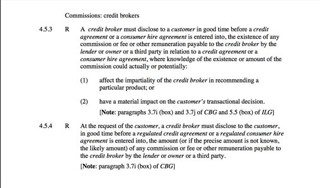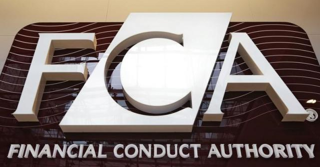The move by Tesco into online used car retailing is to be led by Sir Trevor Chinn, one-time chief executive of Lex Service which was then the largest bricks and mortar car group in the UK.
Now aged 75 and a self-confessed internet novice, he has reached the view that “we have moved far enough now for people to be quite happy about buying a used car on the internet”.
That may be so, but the internet-only retail showroom is a long way from being tried and trusted. One of the most sophisticated in terms of the way it was presented was Autoquake.
It started planning with a clean sheet of paper and former CarLand and Dixon Motor Group executive Garry Hobson at the helm.
But Hobson quit in 2009, the management team was slowly built with online experts not motor retailers, and Autoquake’s plug was pulled after only three years.
Chinn sees leasing companies as the prime source for Tesco: “You know exactly when the cars are coming off lease and can have them for sale – or even sold – before that date.
“By selling them to the retail market we can get retail prices rather than the wholesale price that the car retailers are prepared to pay.
"But we will give all the support that a retailer is prepared to give to the final customer.
“If we can sell with RAC test approvals, people will start to think that there is very little risk.
“We are not in the business of under-cutting the market, nor is Tesco. It is all about the Tesco brand which is very well trusted.”
The intention is that the owner of the car will invoice, rather than the channel through which the sale is conducted.
The last name on the log-book is the formal seller and there is no confusion about who is responsible for the condition of the car.
“The title will never move to us (Tesco). “We have had a huge number of hits on the website which is enough to convince us this will work.
“Our concern is the way that we go to market. We cannot afford to hold stock and we must be seen as delivering value and quality.”
Part of the infrastructure of the website is being drawn from carsite.co.uk which is to be folded in under the Tesco banner.
There are glitches on the Tesco Cars website which slightly undermine the claim of unblinking concentration on quality.
A Mondeo estate is described as a hatchback; a 5 Series estate is represented with a library photo of an unregistered car rather than being the actual car for sale.
One experienced professional, who asked to not be named, said: “It is a very challenging business model.
Autoquake was a pioneer and it shut down with losses of £40 million.
“The concept is sound; it is attractive to the customer. One of the problems was Autoquake had three delivery sites and far too much infrastructure.
"It found that far too many people wanted to kick the tyres before taking delivery and that it had to have a returns policy. That tied up a lot of capital.
"It did not get the scale and therefore did not get the margin to cover the fixed costs.
“However, Tesco is a very good name and they are very determined people.
“There have been various comments that the pricing being used thus far is not sustainable. Looking more broadly, the UK has basically run out of growth in car sales.
For Tesco to be interested there will have to be more to it than just car sales. Tesco is bound to be looking at finance and insurance.”
He saw Motability as a good source of supply, but guessed that would only leave Tesco searching for 75,000 from other lease fleets.
Tesco said after the first month:
Chinn said: “Our approach is more about choice and experience. We are not here to start a price war.”
- It had been “a successful first month of trading with nearly half a million
- visitors.”
- Strong sales figures with the site hitting target.”
- Accelerated dialogue with manufacturers, fleet and dealer groups looking for new disposal channels.”
The thing that he is most keen to communicate is that customers have a choice.
They can either buy immediately or, for a £99 refundable handling fee, reserve a car that will be coming off fleet on a known date. Cars are collected from a handover site in Birmingham.
That will be the first time that the prospective buyer has seen or sat in the car.
At that point, the operation resembles a normal used car supermarket. There is a probability that the buyer will find fault. There is a good chance of the customer seeing a preferable purchase, reclaiming his deposit and starting afresh.
Scratches and bumps are inevitable and there is no workshop foreman with whom to discuss the options of repair or discount.
Car Giant at White City, Britain’s largest physical car supermarket, has everything on one site: a huge stock, valet and repair, salesmen and negotiators, finance and insurance. Its prices appear comparable to Tesco.
Learning lessons of Autoquake
The template for Tesco Cars was Autoquake – the first substantial online only, used car site.
When Autoquake went into liquidation in March, chief executive Dermot Halpin said the business was attracting five million visitors a year and was selling 1,000 cars a month.
The cars were sourced from leasing companies and fleets. Physical distribution depots were set up in Birmingham and Leeds with plans to follow up in Bristol and London.
The web traffic had risen to 50,000 visitors a quarter in 2007. By 2009 that was recorded at 900,000.
The selling price was on average 10% lower than the car supermarkets and prices were fixed at that rate with regular tracking of the opposition.
The directors believed that their costs were sufficiently low to sustain that discount which was paid for by cutting all sales staff cost and having no showrooms.
“When we came to the market we punched above our weight. Customer acquisition was around £90 a car compared with the trade norm of £300.
"But we found that if you want to increase traffic you don’t pay incrementally, you pay on all of your traffic.
"So very quickly it becomes a very expensive exercise to get more reach in a hurry.”
By the end of last year, company accounts were showing turnover of £63 million, but operating losses of £7.3m.
Initially investors offered a bridging loan while the sale of the business was investigated
But by mid-March it was clear that there would be no new investors and that the creditors would no longer support the business.

















Login to comment
Comments
No comments have been made yet.